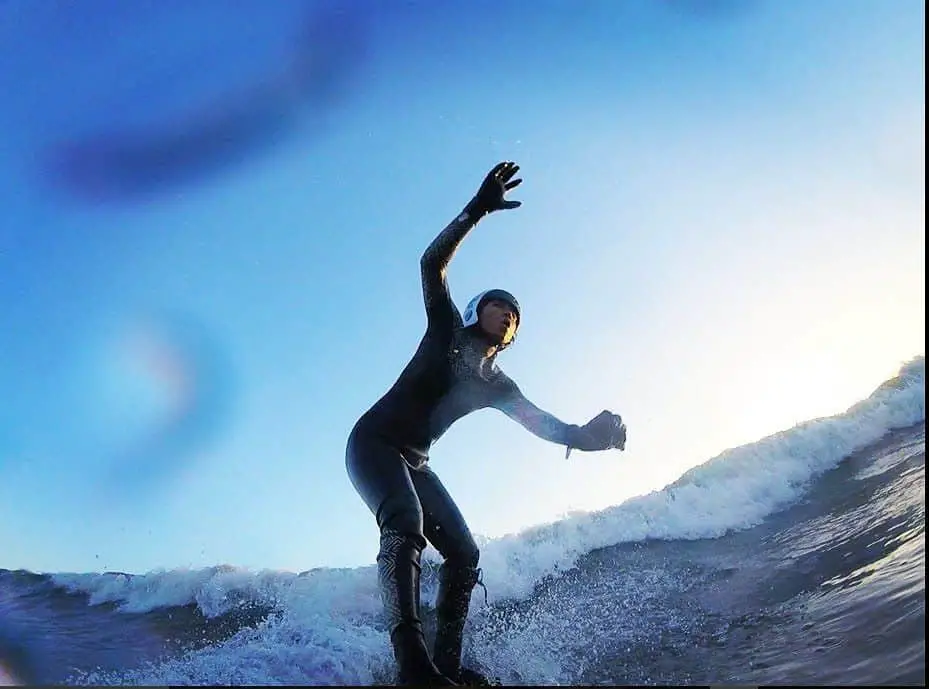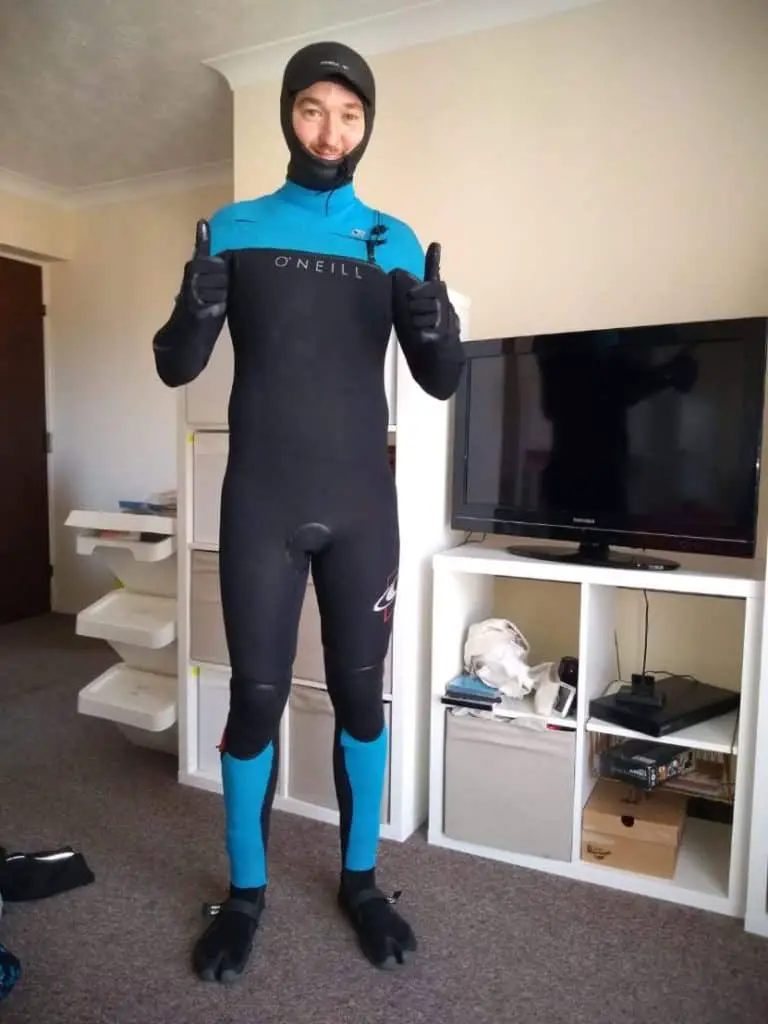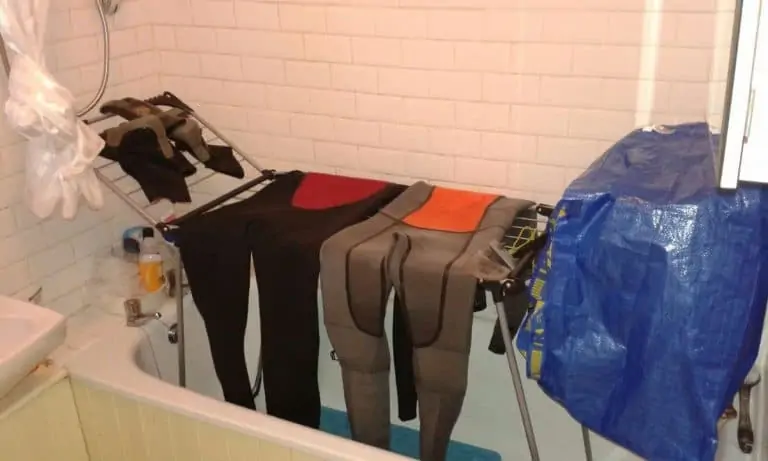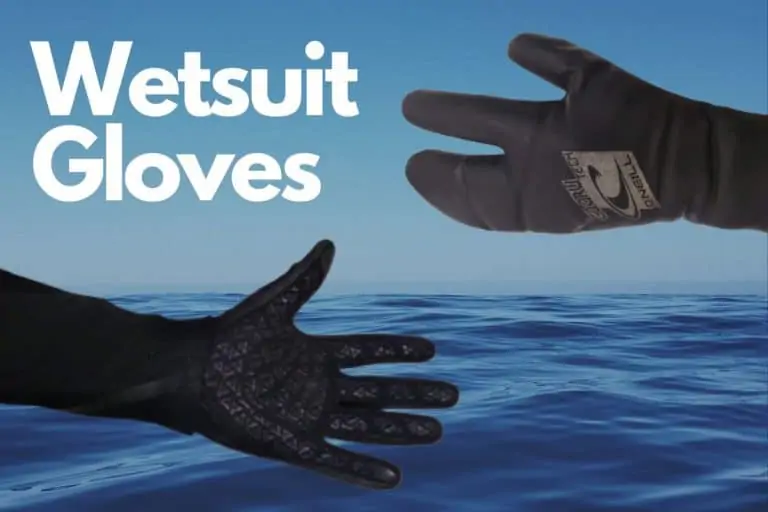8 Tips on How to Stay Warm When Surfing in Cold Water
As the cold weather soon approaches, you will start to feel a chill in the water. However, these colder winter months can offer the best and biggest waves plus allow you to visit some new places.
While many people picture surfing as sunny Californian beaches and palm trees, we know the sport can offer so much more.
Although the weather may be better, the warm summer months offer ankle-high waves, crowded beaches and endless flat spells.
As such, there are many benefits to cold water surfing, including emptier beaches and bigger swells (the UK offers some of the largest and cleanest winter swells in Europe). Spending time on bigger swells will make you a better surfer and will improve your level of fitness.
For a beginner surfer, or even a surfer who has relocated to a new colder climate, the frigid air and icy water temperature might be discouraging. Fear not: here are some tips on how to stay warm whilst surfing.
Start Your Session Warm
It’s important to not be cold before you get into the sea, it’s harder to stay warm when you are already cold. When you immerse yourself in cold water, your body’s natural instinct is to reduce the blood flow to your skin and extremities.
By warming up before heading into the cold water, you will get the blood pumping. Because the cold can make your hands and feet near-unusable, being warm beforehand will keep your body functioning for longer.
Keep a hat and coat on for as long as possible before entering the winter. Try to change under a coat or changing robe, keeping your body as warm for as long as possible.
Avoid changing huddled behind the open car door or behind a towel, as this won’t offer wind protection.
With some practice, you can get changed in the car or change at home if you live near the beach. Once dressed, keep your wetsuit to your waist and your boots on for as long as possible. At the last minute, pull up your suit and put your hood on.

Wear a Thermal Underlayer
Thermal underlayers, like rash vests, give surfers an extra layer of warmth that can help during cold surf sessions. Wearing a thermal underlayer under a wetsuit can really make a difference in the length of time you can spend out in the icy waters. Put this layer of thermals on before leave the house, even if you don’t change into your wetsuit until you get there.
Stay Active
Don’t sit shivering in cold water. It’s important to keep moving to stay warm. Regular paddling keeps the blood circulating and maintains a warm body temperature. Keeping your head above water will help retain the warmth stored in your suit and keep your heart rate steady.
Avoid Duckdives (Where Possible)
We recommend avoiding duck dives, which is sinking the surfboard on the water and diving under the upcoming waves. Your body entirely being underwater will quickly lose heat and shorten the time you can spend in the water.
To avoid this, go to a spot with mellow waves or an easy way to paddle out to the breaking waves, also called a ‘channel’ as this will help you to keep warm.
You can also look to find a surfboard with a lot of volume because they float so well that you might be able to push over some of the smaller waves without duck diving, too.
Bonus cold-water surfing tip
When duck diving, twist your head as this will keep the hood of your wetsuit taught and allow the water to run off the side, meaning less cold water on your neck or in your wetsuit. Trust me, it’s a winner!
Wear a Hood with Connected Neck
A wetsuit hood is very effective at insulating your head and help keep your body temperature regular. Hoods with connected necks will protect you against wind chill when out in the open air.
We also recommend wearing a hooded vest, especially if you own a wetsuit without a head, like this one.
They are designed to be worn under wetsuits, adding extra warmth around your head and neck and extending the thermal range of your wet suit.
Typically, a single backed strip of neoprene wraps around the neck, wrist or ankle area, making a tight and secure fit. This keeps water from entering the wetsuit, but can be a little painful if not fitted correctly.
Wear a Chest Zip Wetsuit
To avoid flushing (when excess water enters the wetsuit) invest in a front zipping wetsuit. With a chest zip, there are fewer gaps compared to back zip suits, and the zip itself is much smaller. The design will act as a barrier of neoprene between your skin and the zip.
With chest zip wetsuits there tends to be no need for Velcro on the neck section, this means less irritation and less likelihood of the neck becoming loose.
Due to the smaller size and position of the zip on the chest, it maximises your flexibility and gives wearers a full range of movements across the shoulders and back.

Use a Wetsuit with Polypropylene Lining
If you’re going to be spending a lot of time in icy waters, invest in a wetsuit with polypropylene lining. Polypropylene is famed across numerous industries for its waterproof properties This lining will provide insulation as well as protection from the wind. If your wetsuit is not lined, be sure to invest in thermals to ensure your body doesn’t lose too much heat whilst winter surfing.
Tuck Accessories Into Your Wetsuit
Tuck wetsuit booties and gloves under your wetsuit otherwise water will get in them easily, causing them to fill up. Not only will icy water begin to make your hands and feet feel numb, but the gloves and booties will puff up with water and make it impossible to paddle and stand with. If you are concerned with the items staying tucked, fasten them with plastic tie to help them stay in place.
Use Booties with Straps
Booties will keep you warmer, alongside serving to protect the feet from sharp rocks on the seafloor. Using booties with straps across the ankle give added support to the foot and can be adjusted to minimise the amount of water that enters them.
Invest in a Kidney Belt
Kidney belts, sometimes known as heated vests have gained popularity in the last decade. Unlike wetsuits that just insulate your current body heat, they support you by generating their own heat. Quicksilver and Thermalutation both have their own versions of these kidney belts or heated vests. They generally all rely on lithium batteries, but they all have their own unique functions and benefits. Most model use a rubber heating pad, others use heating wire.
Although different vests have heating pads in different parts of the body, we recommend opting for one that is designed to heat the kidney. This is a fantastic way to heat the blood travelling through the body.
Related Questions
How cold is too cold for surfing?
We suggest water temperatures anything lower than 11°C – 14°C / 51°F- 58°F. Of course, it depends on weather conditions, the local break and your own sensitivity to the cold. A water temperature of 50 °F (10 °C) or less can be very dangerous and cause hypothermia.
How do you stay warm in a wetsuit?
Layering is key to staying warm in a wetsuit. Diving shorts serve as an extra layer to insulate from the cold water and make it easier to slide in and out of your wetsuit. Keep your upper body warm with a variety of undershirts on the market, including a rash guard or compression shirt.
Before entering the water, pour warm water down your wetsuit. Pouring hot water down the front and sleeves, means that layer gets trapped and your body will use less of its own heat.
How do you surf in the winter?
Warming up before you surf is especially important in winter time. Take your time warming up your body as your muscles will take longer to warm up in the cold.
Once you enter the water, it’s important to maintain your body temperature for as long as possible. Keep yourself active in the water to feel more comfortable and extend the length of time you can spend surfing. Paddle all the waves you can and don’t stay still for too long.
Why is the surf better in winter?
More extreme winter weather generates more frequent storms, which means strong winds and, in turn, bigger waves – at least this is common in the North Atlantic and Pacific oceans at that time of year.
When the air gets colder and the nights darker the surf spots will be quieter, too, meaning more waves for you and your surf buddies.
Another benefit of cold water surfing is that it means you can try new locations and cultures like British or Scandinavian culture since these spots have more consistent swell in winter. Northern European countries with coastal surf locations are sparsely populated and aren’t typical tourist destinations for surfers at that time of year.
Surfing, asides from being a great sport and hobby, has loads of health benefits. It releases endorphins, helps build strength and tones muscles. Surfing in cold water temperatures makes the body work twice as hard as it has to keep itself warm.
You’ll burn twice as many calories and increase your metabolism – making cold-water winter surfing pretty good bang for your buck in terms of exercise!






